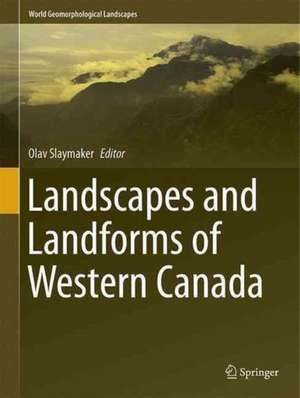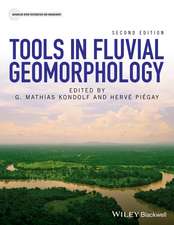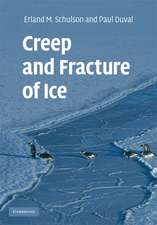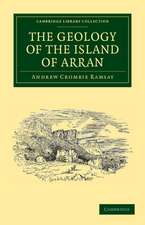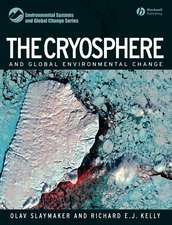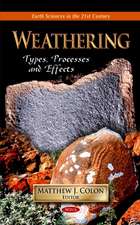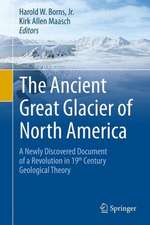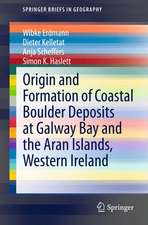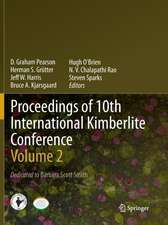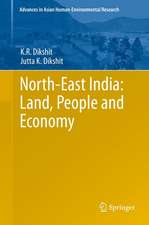Landscapes and Landforms of Western Canada: World Geomorphological Landscapes
Editat de Olav Slaymakeren Limba Engleză Hardback – 16 dec 2016
| Toate formatele și edițiile | Preț | Express |
|---|---|---|
| Paperback (1) | 969.22 lei 38-44 zile | |
| Springer International Publishing – 5 iul 2018 | 969.22 lei 38-44 zile | |
| Hardback (1) | 1008.76 lei 38-44 zile | |
| Springer International Publishing – 16 dec 2016 | 1008.76 lei 38-44 zile |
Din seria World Geomorphological Landscapes
- 15%
 Preț: 654.77 lei
Preț: 654.77 lei - 18%
 Preț: 1263.82 lei
Preț: 1263.82 lei - 18%
 Preț: 1133.93 lei
Preț: 1133.93 lei - 18%
 Preț: 1881.76 lei
Preț: 1881.76 lei - 18%
 Preț: 1409.82 lei
Preț: 1409.82 lei - 24%
 Preț: 813.89 lei
Preț: 813.89 lei - 24%
 Preț: 872.53 lei
Preț: 872.53 lei - 18%
 Preț: 1044.16 lei
Preț: 1044.16 lei - 24%
 Preț: 949.77 lei
Preț: 949.77 lei - 18%
 Preț: 1173.06 lei
Preț: 1173.06 lei - 18%
 Preț: 1131.25 lei
Preț: 1131.25 lei - 24%
 Preț: 920.40 lei
Preț: 920.40 lei - 24%
 Preț: 830.79 lei
Preț: 830.79 lei - 24%
 Preț: 845.46 lei
Preț: 845.46 lei - 24%
 Preț: 709.95 lei
Preț: 709.95 lei - 24%
 Preț: 830.79 lei
Preț: 830.79 lei - 24%
 Preț: 862.51 lei
Preț: 862.51 lei - 24%
 Preț: 668.39 lei
Preț: 668.39 lei - 24%
 Preț: 956.46 lei
Preț: 956.46 lei - 24%
 Preț: 1096.41 lei
Preț: 1096.41 lei - 24%
 Preț: 980.94 lei
Preț: 980.94 lei - 24%
 Preț: 1036.78 lei
Preț: 1036.78 lei - 24%
 Preț: 1110.84 lei
Preț: 1110.84 lei - 24%
 Preț: 1101.30 lei
Preț: 1101.30 lei - 24%
 Preț: 877.18 lei
Preț: 877.18 lei - 15%
 Preț: 706.63 lei
Preț: 706.63 lei - 24%
 Preț: 813.89 lei
Preț: 813.89 lei - 24%
 Preț: 884.26 lei
Preț: 884.26 lei - 24%
 Preț: 866.51 lei
Preț: 866.51 lei - 21%
 Preț: 813.89 lei
Preț: 813.89 lei
Preț: 1008.76 lei
Preț vechi: 1327.31 lei
-24% Nou
Puncte Express: 1513
Preț estimativ în valută:
193.09€ • 209.81$ • 162.30£
193.09€ • 209.81$ • 162.30£
Carte tipărită la comandă
Livrare economică 16-22 aprilie
Preluare comenzi: 021 569.72.76
Specificații
ISBN-13: 9783319445939
ISBN-10: 3319445936
Pagini: 450
Ilustrații: XIX, 435 p. 312 illus., 276 illus. in color.
Dimensiuni: 210 x 279 x 31 mm
Greutate: 1.66 kg
Ediția:1st ed. 2017
Editura: Springer International Publishing
Colecția Springer
Seria World Geomorphological Landscapes
Locul publicării:Cham, Switzerland
ISBN-10: 3319445936
Pagini: 450
Ilustrații: XIX, 435 p. 312 illus., 276 illus. in color.
Dimensiuni: 210 x 279 x 31 mm
Greutate: 1.66 kg
Ediția:1st ed. 2017
Editura: Springer International Publishing
Colecția Springer
Seria World Geomorphological Landscapes
Locul publicării:Cham, Switzerland
Cuprins
Foreword.- Preface.- Introduction: Definition of western Canada.- Part I Introductory by Olav Slaymaker.- Structural and lithologic context.- Long-term geomorphological history.- Cordilleran and Laurentide Ice Sheets.- Contemporary geomorphological processes.- Hydroclimate and runoff.- The human footprint.- Part II Structural.- High mountains.- Glaciers.- Glacial landforms.- Periglacial geomorphology.- Big Rivers.- Large lakes.- The Two Coasts (Pacific and Arctic).- Human Footprint.- Part III Protection of geomorphological heritage by Olav Slaymaker.- World heritage sites.- Provincial and National Parks.- Geotourism.- Index: by subject and location.- Bibliography.
Recenzii
“Wherever you are in western Canada, this book has something to offer you, something to teach you about the landscapes you live among or are driving through on a summer adventure. … The book is filled with hundreds of maps, graphs, and photographs, which really help to bring the stories to the reader. … this book is a must-have for anyone who is enthusiastic about learning the stories behind the landscapes around them.” (Syd Cannings, bcbooklook.com, September, 2018)
Notă biografică
Olav Slaymaker Member of the Order of Canada, is a professor emeritus of geography in the Department of Geography at the University of British Columbia, Vancouver, BC.
His 20+ co-authored and edited monographs and 160+ refereed papers reflect three distinct styles of work. First, he has pursued original field research for 40 years on sediment systems in the Canadian Cordillera and the European Alps, strongly supported and enhanced by his stellar doctoral and postdoctoral students and international
colleagues. Second, he has produced papers and books summarizing trends in land use and environmental change in mountain regions. Third, he has edited monographs with invited international contributions on major environmental and geomorphological themes. He is a former President of the Canadian Association of Geographers and a former
President of the International Association of Geomorphologists.
Textul de pe ultima copertă
This is the only book to focus on the geomorphological landscapes of Canada West. It outlines the little-appreciated diversity of Canada’s landscapes, and the nature of the geomorphological landscape, which deserves wider publicity. Three of the most important geomorphological facts related to Canada are that 90% of its total area emerged from ice-sheet cover relatively recently, from a geological perspective; permafrost underlies 50% of its landmass and the country enjoys the benefits of having three oceans as its borders: the Arctic, Pacific and Atlantic oceans. Canada West is a land of extreme contrasts — from the rugged Cordillera to the wide open spaces of the Prairies; from the humid west-coast forests to the semi-desert in the interior of British Columbia and from the vast Mackenzie river system of the to small, steep, cascading streams on Vancouver Island. The thickest Canadian permafrost is found in the Yukon and extensive areas of the Cordillera are underlain by sporadicpermafrost side-by-side with the never-glaciated plateaus of the Yukon. One of the curiosities of Canada West is the presence of volcanic landforms, extruded through the ice cover of the late Pleistocene and Holocene epochs, which have also left a strong imprint on the landscape. The Mackenzie and Fraser deltas provide the contrast of large river deltas, debouching respectively into the Arctic and Pacific oceans.
Caracteristici
Is the only book to focus on the geomorphological landscapes of Canada West Presents unique visual and tabular imagery Outlines the little-appreciated diversity of Canada’s landscapes and the nature of its geomorphological landscape, which deserves wider publicity
